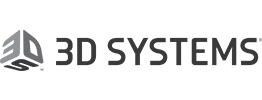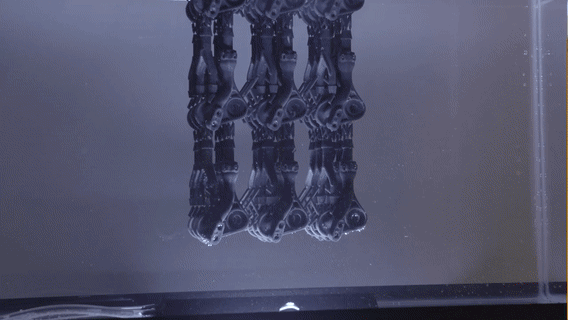
Additive manufacturing (AM) is evolving beyond prototyping to enable end-use parts production across a range of applications. Much has changed to enable this, including the development of AM processes and materials that are capable of meeting manufacturers’ standards for repeatability, reliability, accuracy, surface finish, and more. While traditional manufacturing methods continue to offer more affordable cost models at higher quantities, additive manufacturing offers greater supply chain flexibility and a strong solution for low-volume and bridge manufacturing, not to mention mass customization.
Advancements from 3D Systems are at the forefront of this revolution and are bringing new levels of efficiency, performance and productivity to AM. Beyond the expansion of its production-grade materials portfolio for the Figure 4 3D printing solution, 3D Systems has now introduced high-density stacked manufacturing to tackle the speed and throughput side of the equation.
New Levels of Productivity in 3D Printing
The high-density stacking feature for Figure 4 3D printing is part of 3D Systems’ advanced all-in-one 3D Sprint software. Designed to streamline the file-to-print workflow, 3D Sprint offers tools for print file preparation and optimization, including automatic support generation and optimized part placement to maximize build volume space and productivity. 3D Sprint’s new high-density stacking feature helps users print high volume batches with an efficient file preparation workflow. To use the stacking feature, users import a part and base file, define the stack in terms of orientation and part quantities, and use automated tools to replicate consecutive vertical stack layers and supports, quickly and without the need to manually orient each part and its supports.

High-density vertical stacking in 3D Systems’ 3D Sprint® enables batch-run production on its Figure 4 technology.
Figure 4® Industrial Stacking

This new feature helps users take advantage of the full build height (350 mm) of the Figure 4 printer and offers new efficiency across the board, from setting up the job, to 3D printing, to post-processing. When the Figure 4 stacked manufacturing solution was evaluated for batch manufacturing at Decathlon, the world’s largest sporting goods retailer, Decathlon reduced print preparation time by as much as 80-percent. According to Decathlon materials engineer Gregoire Mercusot: “By stacking parts we are able to print in batches of 100, and have reduced the time it takes to prepare a build from 30 to 60 minutes to just six to 10 minutes.”
Pinpoint-contact strut support structures make high-density stacking automation compatible, allowing for quick support removal without manual labor. This means that in addition to increasing the number of parts produced per print, there is a decrease in labor time, enabling an overall lower cost per part.
While traditional manufacturing modes are likely to be used for the highest production volumes, advances in production-grade photopolymer materials, technology, and software have made AM economically viable for manufacturers that require significant quantities of initial series production, post-series production, and spare parts production. This technology is also making it possible for manufacturers to increase the depth and flexibility of their production process, even as they are delivering parts with greater cost efficiency.
3D Systems offers application-specific support through its Application Innovation Group to further facilitate this shift in capability. Combined with its advanced hardware, software, and materials, their deep industry expertise helps manufacturers maximize the benefits of AM to innovate better and faster than ever before.
Subscribe to Our Email Newsletter
Stay up-to-date on all the latest news from the 3D printing industry and receive information and offers from third party vendors.
You May Also Like
New Report: Semiconductor Industry to See $1.4B in 3D Printing Revenues by 2032
“The semiconductor sector has become the most strategically significant area of global industry.” Truer words are hard to come by when it comes to the modern world, and they are...
Will Photonic-Crystal Lasers Revolutionize 3D Printing?
Powder bed fusion (PBF) for metals and polymers predominantly utilizes lasers as the primary heat source. Some directed energy deposition (DED) technologies also employ lasers, while various vat polymerization methods...
3D Printing Unpeeled: Orbex Investment, IndoMIM and HP, Ultrasonic Waves
INDO-MIM has bought three HP Metal Jet S100 printers, operating two in India and one in Texas. This is a win for HP because the company has deep experience in...
3D Printing Webinar and Event Roundup: April 21, 2024
It’s another busy week of webinars and events, starting with Hannover Messe in Germany and continuing with Metalcasting Congress, Chinaplas, TechBlick’s Innovation Festival, and more. Stratasys continues its advanced training...
































